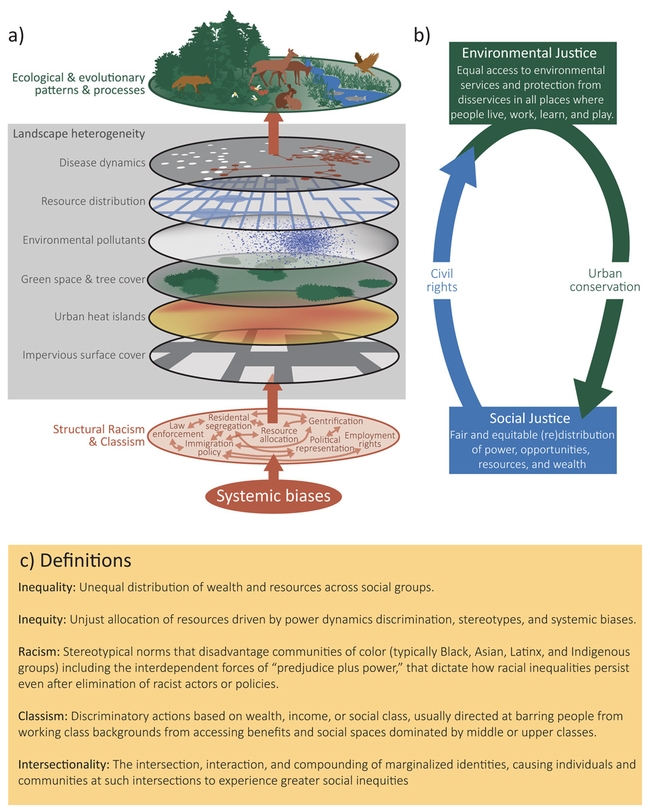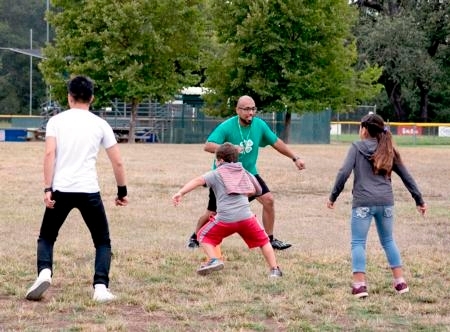- Author: Mathew Burciaga, UC Berkeley Rausser College
A new book edited by UC Berkeley Rausser College researchers centers equity and justice while delving into the complex elements that support or constrain biodiversity in cities.
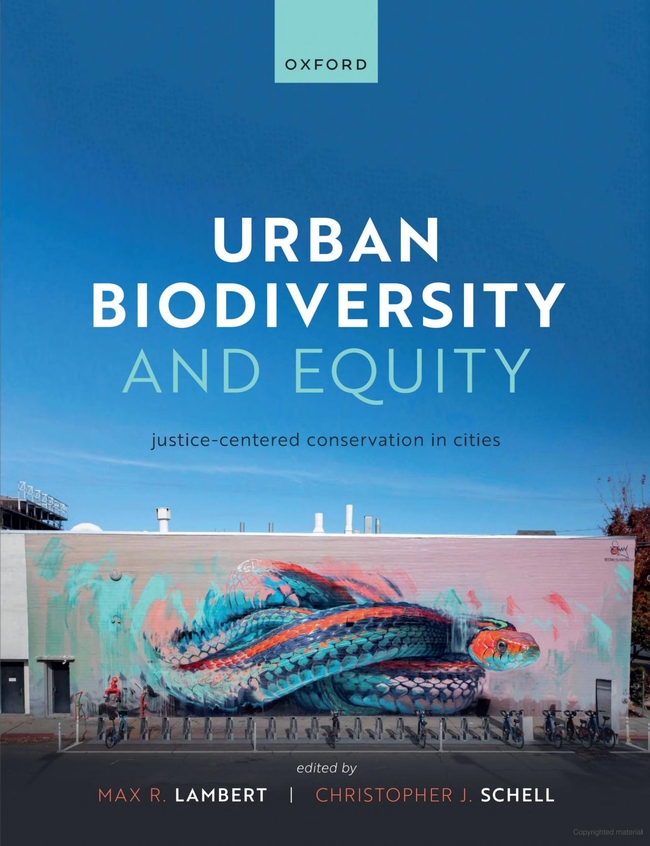
Research continues to show that development has created environmental hazards like factories, freeways, or power plants that are often disproportionately placed in low-income areas or communities of color, and that remaining natural resources in urban areas, like trees and parks, are concentrated in wealthier neighborhoods. With renewed attention placed on the role of conservation, researchers are exploring new ways to make cities and their inhabitants active partners in preserving biodiversity and mitigating climate change.
A new book edited by Rausser College researchers delves into the complex elements that support or constrain biodiversity in cities — including human-wildlife interactions, climate fluctuations, landscape diversity, and environmental racism. Edited by Environmental Science, Policy and Management professor Christopher Schell and former postdoctoral researcher Max Lambert, Urban Biodiversity and Equity: Justice-Centered Conservation in Cities offers scientists, decision-makers and practitioners a new model to develop solutions for managing urban biodiversity while centering social justice, environmental justice, and civil rights.
Rausser College spoke to Schell and Lambert about their book ahead of its Dec. 19 release in the United States.
This conversation has been edited for length and clarity.
What inspired you to create this book? 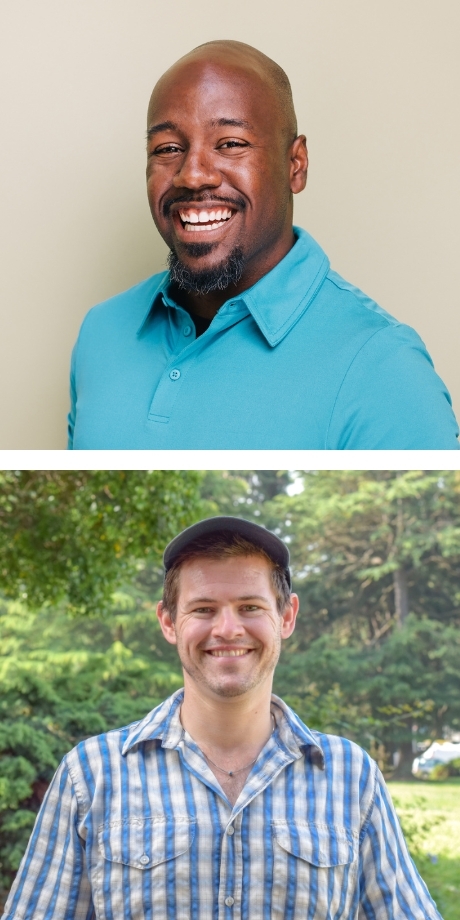
Max Lambert: We were invited to put together a book on urban ecology and biodiversity. We knew there were other books out there, but we knew we wanted to write a book through a different lens: specifically, we're building off a Science paper led by Chris that centers equity and justice as the primary axis for conservation work. That was our guiding principle for taking this from journal publications to something that people can hold.
Christopher Schell: This is something that Max and I have been discussing since 2018. After our Science paper came out in 2020, Max contacted me to discuss what it would look like to expand that paper as a larger volume. We connected with folks who reached out about the paper and others whose work spans the urban-ecological spectrum to coalesce their contributions into a book that integrates equity throughout.
We didn't want to fall into the trap of thinking that academic institutions somehow have a hold on all this knowledge. Max led our efforts in trying to convey how applied this field is and emphasize the field's interconnectedness. We were excited to get folks who could span what it looks like to think of these theoretical applications in biodiversity science in relation to a city.
Lambert: And because urban ecology has blossomed so much as a field during the past 20 years, we spent a lot of time determining what topics we knew we wanted to emphasize in this book and what we would put on the back burner. We also wanted to bring in people from different backgrounds, walks of life, career stages, or parts of the world who can tie the threads of equity and justice together with this science.
How would you say the field of urban ecology has evolved over time?
Lambert: There have been pockets of people studying urban ecology from the 60s onwards, but their research never became part of the dominant mantra. By the 90s, we had the National Science Foundation (NSF) support two Long Term Ecological Research stations in Baltimore and Phoenix, which helped blossom and lead this area of research. But in my experience, even when I started my doctoral work a decade ago, urban conservation wasn't really a thing—there were still tons of folks saying we needed to protect nature from the city.
Schell: For us, the question is, when do we recognize that urban ecology has entered the public consciousness to the point that folks outside the academic sphere are thinking about it? We're certainly getting there in the Bay Area, as well as in a handful of cities across the country and globe. Folks in these communities are thinking more and more about their relationships with wildlife, biodiversity and nature inside these urban spaces. But sometimes folks look at us like we're crazy when we talk about the critically endangered species that are encased in a metropolitan area, or when we tell them about the large carnivores that roam their backyard. Some people have not yet fully understood that cities are hubs of nature that we created on top of existing biodiversity hotspots.
How does this approach differ from traditional models of conservation research?
Schell: We're leveraging a past research framework called the ecology in, of, and for cities to propose something called conservation in, of, for and with cities. We're still thinking about the many ways in which we maintain biodiversity across different axes; incorporate biological, social, and built elements of cities to manage ecosystem processes; and implement justice-centered approaches as we build sustainable practices. But all that felt unidirectional, where scientists or practitioners are doing things for the people who live in the city.
Conservation in, of, for and with cities is the new atom. It's explicitly calling out co-production, how we have equitable resource distribution, and how we fold in the other paradigms. We're emphasizing that if we don't have conservation with cities, none of the other components are going to work. In our minds, this is the linchpin to all those other pieces. We're not the only knowledge holders in this conversation, and by no means do you need to be of a certain age, race, class or ethnicity to participate in it. We're all in this together and have something to add to the conversation.
Lambert: You can't do conservation work without cities. You can't grey out urban areas and focus conservation work elsewhere. It's all part of the mix. Conservation with cities means engaging in conservation work at any scale — from state to national to international. You can't set goals just for remote places; you have to bring them into urban areas as well. All this goes back to our fundamental principle of centering equity and justice in all conservation. It is heavily pronounced in urban areas, but it's central to conservation work anywhere in the world.
Ecology and evolutionary biology are fundamental fields of biology, but they don't exist in a vacuum. Our Science paper showed that we need to be mindful of how society, culture, and politics influence life on Earth. We're doing the same thing here with conservation.
Can you think of any people, cities or organizations that are taking the principles you describe in your book and using them to improve urban biodiversity?
Schell: Max and I often riff off of Singapore being the mecca of urban ecology because of how that city is designed and embedded inside of nature, but we're starting to make improvements on the West Coast, too. One of the local organizations that has been pushing urban ecology forward is the California Academy of Sciences. Their Reimagining SF initiative brings together researchers and practitioners from across the Bay Area to think about San Francisco not as an urban environment with nature sprinkled in, but as a city inside of nature — one built in collaboration with ecosystem processes. It's a clear departure from the ways in which cities have thought about urban ecosystems in the past, which was strictly concerned about providing municipal services to its people.
Lambert: I went to Canberra, the capital of Australia, in 2016. It's a highly built place, but they've embedded trails and green spaces throughout the city; there are kangaroos, wallabies, and all kinds of parrots everywhere. It's very clearly designed, as Chris said, in collaboration with nature. The Presidio of San Francisco has also been an interesting nexus of urban conservation work. The Presidio Trust, which manages the park with the National Park Service, has done tremendous work with communities nearby. They've replaced non-native plants that have overgrown the area, cleaned up a bunch of pollution in the pond, and reintroduced endangered plants within the Presidio.
I also work closely with the City of Tacoma in Washington. Maintenance workers — the folks who take care of the concrete, asphalt, and sewers—are not the type of people you traditionally think of as doing conservation work, but in Tacoma, they are so impassioned to make sure biodiversity can thrive, and people can experience it everywhere they live.
Have you found engaging with policymakers or community members difficult while conducting your research?
Schell: The flagship species that my lab studies is coyotes, a species that garners a lot of interest in the Bay Area. In SF, a good chunk of folks have a real love-hate relationship with them. They think that their cats have some agency to stay outdoors indefinitely or that their dog can stay off-leash in an on-leash area, which often results in conflicts with coyotes. And as we start doing more of this work, it seems as if everybody has a story about a coyote — or a bobcat, raccoon or a fox — doing something they adore or disdain.
These fine-scale human-animal interactions bring everybody to the table. They want to hear more about how these are connected to the larger universe of stories around urban biodiversity, environmental justice, equity and resilience because it impacts them at this individual level.
Lambert: Maps will become essential to these conversations and are what entice people to join. For so long, the image of conservation was just David Attenborough in the middle of the world somewhere, in a place we can't necessarily relate to. But now, I can set up a map on iNaturalist that everyone can contribute to and access for free. Whether it's a map of all the trees in their city or observations of turtles, frogs or hawks, people will be able to put themselves in the context of their city. They can actually paint that picture of the landscape — they can see the asphalt, they can see trees — and place their community in the broader grand scheme of the universe.
Schell: One of our flagship projects deploys camera traps across urban to wildland spaces. We put up placards that give out our contact information if people are interested in the project; we've had over a dozen people in the last year reach out to us who are interested in learning more about the camera traps, including city officials. A figure from our Science paper created by co-author Dr. Simone de Roches was recently republished in the New York Times, and after reading that, some folks from the City of Piedmont's Recreation Department reached out. This small example highlights how far-reaching and continually helpful the work has been in creating collaborations across the Bay.
Lambert: I think that's the power of urban areas for conservation and getting people engaged. They know where they fit into much more easily than if you were to ask, “How do we protect tigers inMumbai?” It matters in the grand scheme — people generally care about tigers — but they have no context for it. People have context for their backyard coyote: almost everyone has a story about something in their urban area; they're just looking for someone to tell it to.
Do you think it's possible to create policies that improve urban biodiversity without first addressing the inequities like redlining?
Lambert: There are two panels to the figure that was just republished in the New York Times. The panel on the right shows conservation embedded in a cycle of social justice, environmental justice, and civil rights: that's the foundation for which successful conservation efforts will ever be possible. You can try to chip away at it in small ways, but you will always fight an uphill battle unless you center equity and justice because the things that cause injustice and inequities also degrade the natural world. These things are inherently intertwined.
Schell: If we can't figure ourselves out and figure out how we got to this point while centering equity and justice —which is something we said in the Science paper and at the beginning and end of this book, and also urged all of our co-authors to talk about it — then we will never get to our goals. This book was something that we wanted to get out into the world because this is not something we're alone in; there are other folks who are also interested in this, who also feel the same way, and who have been beating this drum in their communities. It's been a good journey to be able to put this into words and have folks understand how important it is to be able to restore ourselves as a means of then going on to continue to restore the natural world.
- Author: Jodi Azulai
UC ANR LEARNING & DEVELOPMENT
Landing page| Presentation Recordings| Learning Resources
Extension Methods & Delivery
Building Support
Diversity, Equity, and Inclusion
Office, Team, and Personal Management
Extension Skills July 2023: Marketing Research for Messaging
July 13
11 a.m. - Noon
Details & Registration.
Are you interested in learning how to develop messages that resonate with your Extension partners? Join us for a brief session with Lindsey Haynes-Maslow, to discuss how to identify and work with your priority populations to tailor messages that resonate with them.

How Customer Management Relations (CRM) can play a role in helping Cooperative Extension professionals co-create value between their programs and their clients and improve customer service experiences.
Image by talha khalil from Pixabay
Top of page
Administrative units at UC ANR are here to help you build your program and access funding:
Development Services
Government Relations
Office of Contracts & Grants
Fast Track to Contracts & Grants spring 2023 presentation recordings
April 12, 2023 | Introduction to Contracts & Grants (video) Slide deck, with Kim Lamar
April 14, 2023 | From Concept to Submission (AKA Proposal Development and Proposal Process video), Slide deck, with Vanity Campbell, et al
April 19, 2023 | Cost Share and Academic Cost Recovery-Salary Savings (video), Slide deck
April 21, 2023 | Proposal budget preparation basics (or Budget Basics and Calculator) (Video), Slide deck (PDF) with Kendra Rose
May 3, 2023 | Using the new ANR Workflow Automation program to route C&G Forms “800“and Advance Account Request (Video), Slide deck (PDF) Form 800 Quick Guide (PDF) Advance Account Quick Guide (PDF)
May 5, 2023 | Understanding the awards process (Video), Slide deck (PDF)
May 10, 2023 | Working with Subrecipients (Video), Slide deck (PDF)
May 12, 2023 | Post Award Process (Video), Slide deck (PDF)

An Equity-Minded Approach to Writing Effective External Review Letters for Tenure 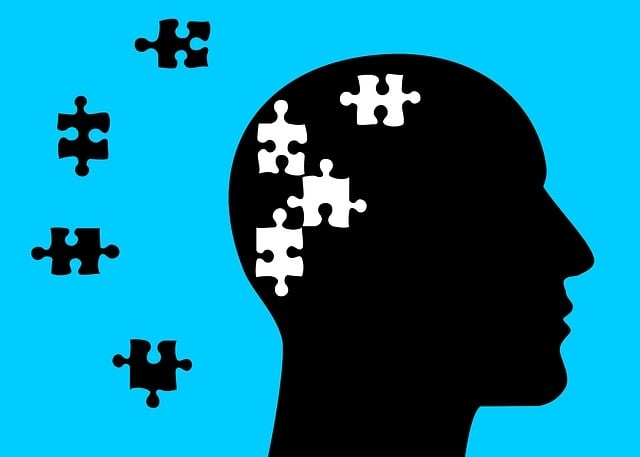
Activate your account (All UC ANR employees have access)
July 18
11 a.m. – Noon
Details & Registration
Senior faculty are incredibly powerful. In a two-page tenure letter, they can make or break a career. This power has an outsized impact on scholars with marginalized identities, such as Black academics, who are promoted with tenure at lower rates than their White colleagues. We suggest that this difference in tenure rates is due to an implicit, overly narrow definition of academic excellence that does not recognize all contributions that Black scholars make to their departments, institutions and academia in general. Read more.
Diversity Certificate Series (UC Davis, Equity and Inclusion Program and Learning Center)
The Diversity, Equity & Inclusion Education Program, in partnership with UC Davis Learning and Development, offers the Cross-Cultural Competence Certificate Series and the Understanding Diversity Certificate Series, both of which are aimed at developing and strengthening competencies in the area of diversity, equity and inclusion. Image by Tumisu from Pixabay
Top of page
When to Use P-Cards vs. Travel Cards
UC ANR Business Operations Center (BOC)
Quarterly Webinars: Our Two Cents
July 20
12-12:30 p.m.

Zoom webinar link https://ucanr.zoom.us/j/751701428?pwd=Q1ZrbUtoQVJwMXJVRkQydUlwNytJQT09
Password: 4Learning | +1 669 900 6833 | Webinar ID: 751 701 428
Image by Memed_Nurrohmad from Pixabay
Fostering Health and Well-Being Across Extension (free - Sponsored by NAEPSDP - National Association of Extension Programs and Staff Development Professionals)
July 10-14
Noon – 1 p.m. Pacific Time
Register.
This year's theme is wellness and will focus on efforts at the organizational, managerial, employee and community levels to provide health and well-being programs and opportunities for employees and clientele. We will wrap up the week discussing ways to tell our health and well-being story more effectively. Who should participate in Virtual Summer School? Anyone! From Extension directors to mid-managers, to program and staff development specialists and
beyond. We welcome anyone interested in these topics to join us for any or all of the sessions.
The Art of Saying "No" (National Center for Faculty Development & Diversity)
Activate your account (All UC ANR employees have access)
July 13, 11 a.m. - 12:30 p.m.
Details & Registration
Are you confused about when to say "yes" and "no" to other people's requests? Do you often say "yes" to requests without realizing the impact that response will have on your time and productivity? Do you find yourself feeling angry and resentful because you've said "yes" too often? Come and learn our favorite strategies that you can implement immediately so you can add "no" to your vocabulary.

Tuesday, July 18
12:10 - 1 p.m.
Register for the Zoom webinar.
We will explore how to create quick, healthy balanced meals in minutes. You don't need a culinary degree to prepare healthy meals, but you do need to prepare. We will review how to prep, plan and get creative for quick, nutritionally balanced meals. After registering, you will receive a confirmation email with information on how to join via computer or phone. Share the event flyer with your colleagues! Presented by UC Davis Health Food and Nutrition Services and Staff and Faculty Health and Well-being. Image by OpenClipart-Vectors from Pixabay
Be the manager people won't leave (LinkedIn Learning)
Contact UC ANR IT to request your account help@ucanr.edu
Course link.
Manager relationships can be the make-or-break point for whether employees stay or go. Join veteran HR leader LaurieRuettimann as she reveals the data behind why it's more important than ever to be a manager who demonstrates empathy and inspires loyalty from the workforce. Ruettimann covers basics first: be someone people can trust, be an example of integrity and be relentlessly inclusive. She steps you through ways to inspire your employees to grow.
Evidence suggests that improvements in people management practices, especially the development of supportive managers paired with time and place flexibility, contribute to increased well-being.
Top of page
Image by Gerd Altmann from Pixabay
Everyone can learn something new.
UC ANR Learning and Development.
- Author: Pamela Kan-Rice
The 4-H Program Leaders Working Group has published a series of fact sheets titled “Thriving with an Equity Lens.” While the fact sheets are written for 4-H professionals, the information is applicable to all of UC ANR's work with communities.
“These fact sheets provide information and recommendations on how to foster a sense of belonging for marginalized youth, list staff competencies needed to engage a youth population, and offer recommendations for culturally adapting program evaluations,” said Fe Moncloa, 4-H youth development advisor for Santa Clara County.
“Programming with an equity lens necessitates having an understanding of these concepts at the same time: paying attention to multiple systems of oppression, knowing the past and present cultural histories of your target population and having the ability to shift practices on the spot.
“The information on these fact sheets will hopefully help you have a greater understanding of the cultural histories of diverse populations and support you to offer culturally responsive programs.”
The first fact sheet defines many terms used to talk about diversity, inclusion and equity.
The 11 fact sheets cover the following topics:
- Intro: Thriving Through an Equity Lens
- Immigrant and Refugee Youth
- LGBTQ+ Youth
- Youth Experiencing Homelessness
- Youth in Foster Care
- Youth with Disabilities
- Youth Living in Poverty
- Youth Mental Health and Wellbeing
- African American Youth
- Latinx Youth
- American Indian/Alaskan Native (First Nations) Youth
All of the “Thriving with an Equity Lens” fact sheets are posted at https://access-equity-belonging.extension.org/resources/fact-sheets.
- Author: Pamela Kan-Rice
VP Glenda Humiston has appointed 11 ANR people to an initial two-year term as founding members of the Diversity, Equity and Inclusion (DEI) Advisory Council for UC Agriculture and Natural Resources. This appointment is effective retroactively from Nov. 1, 2020, through Oct. 31, 2022.
In a Jan. 29 ANR Update, Humiston wrote:
I am convening this advisory council to support DEI efforts that UC ANR staff and academics have undertaken to improve working environments within UC ANR, as well as to improve quality of life for marginalized populations living in the state of California. Diversity is one of our core values and developing an equitable and inclusive society is one of our public values. This Council is a commitment by UC ANR leadership to take division-wide action on the existence and impact of longstanding discrimination within our Division, as well as in our efforts throughout the state.
I am asking the founding members to recommend a formal charter to document the objectives, organization and functions of the council. While the initial appointment for all founding members is two years, the intent is for members to have staggered appointments to allow for turnover and continuity. I ask that the Council work to develop the Charter and an agenda for an initial meeting with myself, AVP Powers and AVP Tran by June 30, 2021.
Council members include
- Elaine Lander
- Esther Mosase
- Fadzayi Mashiri
- Gail Feenstra
- Katherine Soule
- Keith Nathaniel
- Laura Snell
- LeChé McGill
- Mohammed Yagmour
- Ricardo Vela
- Ron Walker
- Author: Jodi Azulai
Welcome to ANR's 21-Day Anti-Racism Challenge!
Sept. 14–Oct. 5, 2020 ucanr.edu/21days
ANR employees, along with other UC locations and thousands of other people across the US and beyond, are committing to deepening understanding of, and willingness to confront, racism for 21 consecutive days.
Diversity scholar Eddie Moore, Jr. created the 21-Day Challenge to encourage a deeper understanding of race, privilege, supremacy, power and oppression. Why 21 days? Some say it takes 21 days to create a habit. The intention of this initiative is to support ANR employees in developing “effective social justice habits” to effect meaningful change.
People at Food Solutions New England Sustainability Institute (FSNE) were inspired by his work and the work of Debby Irving and Marguerite Pennick-Parks to adapt the 21-Day Habit-Building Challenge to their food system network. FSNE has been organizing and hosting the Challenge every year since 2015.
ANR has adapted FSNE's February 2020 21-Day Equity Challenge titled “Beyond Words: to Action and Resiliency” to make it easy for employees to independently dive into their own examination of the program or to create a cohort of ANR employees with whom to share the experience.
Purpose
Through a look at the food system challenge developed by FSNE, we will distinguish that racism is expressed through institutions, cultures and behaviors instead of personal character defects. Uncovering inequities and injustices will assist each of us in broadening our understanding and compassion and grow our engagement towards anti-racism and toward the experiences of Black Americans.
In examining the Black experience, we will consider our own personal layers of privilege and those of all marginalized people, keeping in mind marginalized colleagues, clientele, community members or maybe even family members. Marginalized people include and are not limited to age, class, ability, immigration status, race, sexuality, spirituality, gender, gender expression, ethnicity, culture, gender expression and identity and generation.
Most importantly the challenge will help us discover the many ways we can individually and collectively promote a more just and equitable food system for all. It will also prompt us on ways we can work as individuals, with others at ANR, with marginalized clientele, within our communities and families to dismantle these systems everywhere.
When
The 21-Day Challenge takes place Sept. 14, 2020, through Oct. 5, 2020.
Who
You and a group of 6 to 8 ANR colleagues with whom you'd like to explore and learn with.
How
- Reach out to a group of ANR colleagues and form a cohort of 6-8 participants.
- Create a set of Group Agreements (example) that foster a secure space for discussion.
- Refer to the assignments listed below and consider how often you will meet (ex., once/week) via phone or Zoom to discuss what you learned, or whether you will share thoughts via some type of chat system such as Slack or Microsoft Teams.
You do not need to complete every single reading and every single assignment to reap benefits. Do what you can.
Activities
As mentioned above, the activities of ANR's Challenge are based on FSNE's February 2020 21-Day Equity Challenge titled “Beyond Words: to Action and Resiliency. We are entering this examination of inequities in the food system to:
- Learn
- Act
- Reflect
Prework - Getting prepared
The post at this link provides suggested “pre-work” to prepare you before you start your journey. Think of it as stretching before a jog or a softball match. Note – you will not receive daily email prompts as suggested in the post. You and your cohort will work through the listed activities independently.
2020 Racial Equity Challenge Launch Webinar (57:45)
Feel free to view the recorded webinar that took place at the start of the March 2020 21-Day Racial Equity Habit Building Challenge.
Day 1 – Monday, Sept. 14 Racial Identity Formation
Understanding the process of racial identity development is important for self-awareness, relationship-building, and work for equity. We are, all of us, wonderful mashups of identities, and experiences. Refer to the post at this link to reflect specifically on where you are in the different stages of racial identity development.
Day 2 – Tuesday, Sept. 15 Racial Socialization
Socialization is a process we all undergo – it is how we develop values, habits and attitudes and learn to function in the world. Understanding the process of socialization can help us understand how we came to where we are in our views of race and racism in the food (and other related) systems and what we are willing and “able” to do to work for justice.
Day 3 – Wednesday, Sept. 16 Indigenous Food Ways
In her book Sacred Instructions: Indigenous Wisdom for Living Spirit-Based Change, Penobscot lawyer, activist and teacher Sherri Mitchell (Weh'na Ha'mu Kwasset) writes, “One of the most important things we can do for ourselves, our children and the future of the planet is to decolonize our minds and ways of life.”
Day 4 – Thursday, Sept. 17 Food and Farm Workers
The very foundation of our food system in the United States is grounded in slavery. This started with the system of plantation slavery in the Southeast, moved into indentured servitude and share cropping and has continued over time with “agricultural exceptionalism,” which has left farmworkers out of labor protections over time.
Day 5 – Friday, Sept. 18 Whiteness and Anti Blackness
Gita Gulati-Partee and Maggie Potapchuk, in an article titled “Paying Attention to White Culture and Privilege: A Missing Link to Advancing Racial Equity,” write “Processes aimed at racial equity change can overlook the privileged side of inequity.” Work for racial justice in our food and other systems must include naming and de-centering whiteness, white privilege, and white superiority/supremacy, which racism is designed to protect and uphold.
Day 6 – Saturday, Sept. 19 Catch -Up and Reflections
While reflecting on the first week's prompts, we invite you to take some time to get quiet and reflect. Is there anything that you see differently based on your participation so far? What images come to mind? How does this impact how you think about your life, work, volunteerism, studies in food systems or your relationship to food? Is there anything you are inspired to do differently?
Day 7 - Sunday, Sept. 20 Week One Catchup and Reflections
Part of grounding in the reality of racism and other forms of oppression is not simply about thinking, but also honoring our emotional and embodied reactions. There is important information in our feelings and bodies that dominant professional culture can often marginalize. As you reflect on this week's prompts and resources, what emotions come up? What do you sense in your body? What does that tell you? What can you learn from that?
Day 8 – Monday, Sept. 21 Internalized Racism
Of the four levels of racism (internalized, interpersonal, institutional, and systemic) internalized can be the hardest to see and is often the hardest to talk about. And yet for healing to happen, what is otherwise unseen must be named. Internalized racism can manifest as internalized racial inferiority on the part of Black, Indigenous and People of Color and as internalized racial superiority for White people.
Day 9 – Tuesday, Sept. 22 Interpersonal Racism
Though some would believe otherwise, interpersonal racism is very real. We are seeing more visible evidence of this in the time of COVID19, including escalating attacks on Asian and Asian-American communities. Everyone, and especially White people, have a role in calling out racism and bigotry, and this can be a hard thing for some people to do. Even if it is not difficult to do, it can be difficult to do in a way that is ultimately productive, inviting someone who has said or done something that perpetuates racism to change or to consider changing.
Day 10 – Wednesday, Sept. 23 Institutional Racism
Institutional racism shows up in both formalized and informal ways, from Human Resources policies that privilege white dominant norms of “professionalism” to cultures that instill a sense of belonging to those who feel more comfortable in norms of whiteness (go back to the prompt from Day 5 to dig back into this).
Day 11 – Thursday, Sept. 24 Structural Racism and New Narratives
Poet and novelist Ben Okri wrote, “Beware of the stories you read or tell; subtly, at night, beneath the waters of consciousness, they are altering your world.” Systems scientist Sally J. Goerner has added, “The stories we tell ourselves about how the world works form our greatest survival tool.” Stories hold tremendous power in our world, work, and lives. Writer Chimamanda Adichie notes: “Stories have been used to dispossess and to malign. But stories can also be used to empower, and to humanize. Stories can break the dignity of a people. But stories can also repair that broken dignity.”
Day 12 – Friday, Sept. 25 Structural Racism & the Racial Wealth Gap
As Inequality.org puts it, “Systemic and structural racism has contributed to the persistence of race-based gaps that manifest in many different economic indicators. The starkest divides are in measures of household wealth, reflecting centuries of white privilege that have made it particularly difficult for people of color to achieve economic security.” This gap means that many Black and Indigenous people and communities and People and Communities of Color are more at risk financially than White people and communities at times of disruption. And with respect to the food system, it means having less access to the means to purchase land, start a business, etc.
Day 13 – Saturday, Sept. 26Catching Up and Reflections
Take some time to catch up on this past week's prompts. Reflect on the different approaches we have explored so far for addressing the different levels of racism (internalized, interpersonal, institutional, structural) and white superiority/supremacy.
Day 14 – Sunday, Sept. 27 Reflection
As with last weekend, we invite you to find some quiet time (if possible and desirable) to get centered and to consider the past two weeks of your participation in the Challenge. Check in with yourself. What do you sense/feel? How are you physically? Intellectually? Emotionally? Spiritually? What are these sensations telling you?
Day 15 – Monday, Sept. 28 Reparations
The National Black Food and Justice Alliance, along with growing numbers of regional and local groups, including white “accomplices,” are calling for reparations of land and resources to Black and Indigenous people to account for decades of extracted wealth.
Day 16 – Tuesday, Sept. 29 Equitable & Liberation Forms of Food System Governance
Government and governance have both been and continue to be forces for perpetuating and exacerbating racial inequities. By governance, we mean “the processes of interaction and decision-making among actors involved in collective problem-solving that lead to the creation, reinforcement, or reproduction of social norms and institutions.” Governance happens through government, and also through organizations, communities, markets and networks.
Day 17 – Wednesday, Sept. 30 Sovereignty & Self Determination
Someone at a Food Solutions New England Network Team meeting once said, “Equity within fundamentally dehumanizing systems is not what the goal is.” Rather, equity is tied to “liberation” (from racism, othering, white supremacy, patriarchy, extractive forms of governance and economics) when it lifts up food sovereignty and self-determination.
Day 18 – Thursday, Oct. 1 Raising the Next Generations
Each generation is hopefully building on the work of those that came before. We certainly see that up and coming generations seem to be more aware of what is wrong in our food and related systems and are determined to create something better. And this is ideally about multi-generational work …maybe four generations to carry the work forward.
Day 19 – Friday, Oct. 2 New Patterns, New Vision
At FSNE, we believe that vision and imagination are powerful “leverage points” in systems for finding a path forward beyond oppressive structures and extractive mindsets. And we know we are in good company! In her book Emergent Strategy, adrienne maree brown writes that we are engaged in an “imagination battle”, that the current conditions are the result of someone's imagination, a de-humanizing and domination-oriented view. There are so many other alternatives, if we would be bold, broaden our view, and band together with one another to create new living and life-affirming stories.
Day 20 – Saturday, Oct. 3 Week Three Reflections
What are your main takeaways from the Challenge? Where are you now compared to before you started? How do you feel? What new knowledge or insights do you have? What hopes?
Day 21 – Sunday, Oct. 4 Closing Reflections
Today's prompt builds on yesterday's reflection about how the Challenge has guided you to think and act differently, perhaps more boldly, on this journey of racial equity and justice.
How will you put any of your new commitments into action, starting as soon as Monday, October 5? What kinds of support do you need to do so? Do you have those supports or can you organize them into being, perhaps with help from others? Please share your comments here. You have an option to share anonymously in this survey. We really want to hear your responses!


